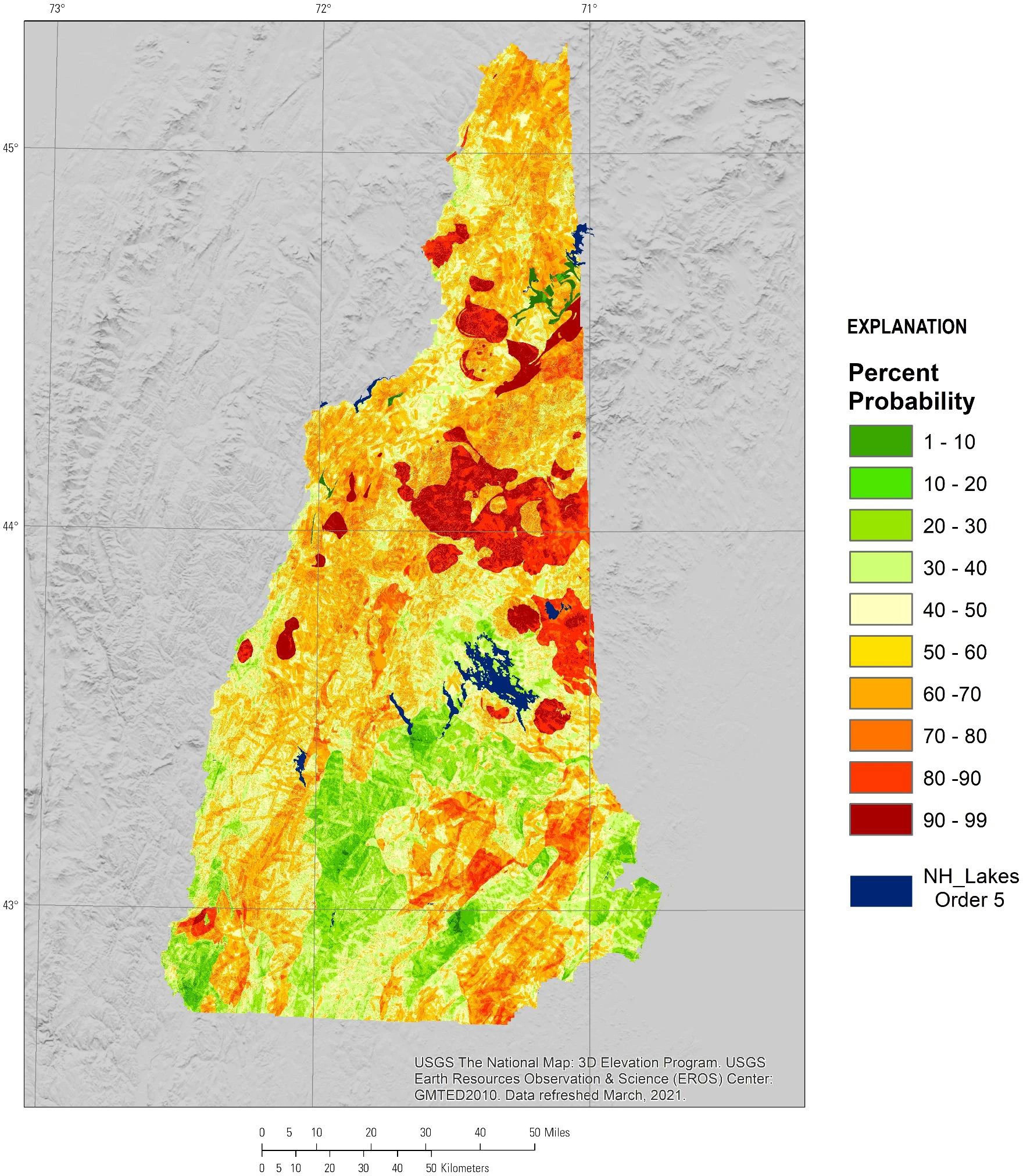Comprehensive report presents ‘a clear picture’ of probable distribution

The study found that more than half the state’s groundwater has a 50 percent or higher probability of radon levels above what’s considered safe.A newly released study estimates that 55 percent of New Hampshire’s groundwater probably has elevated radon levels.
The study, which maps radon and uranium levels across the state, found that more than half the state’s groundwater has a 50 percent or higher probability of radon levels above what’s considered safe. The state says levels higher than 2,000 picocuries per liter are unsafe to drink.
The study also estimated 76 percent of New Hampshire groundwater has a 50 percent or higher probability of detectable concentrations of uranium.
Conducted by the U.S. Geological Survey, the study used public data to map the presence of radon and uranium.
“This is the first really comprehensive statistical analysis of radon levels, in terms of the spatial distribution,” said Richard Moore, a USGS hydrologist and the study’s lead author. “It presented such a clear picture. … I wasn’t sure the statistical analysis would have such results.”
Radon and uranium are often found in bedrock, including granite, and can seep into groundwater.
Moore said southern parts of the state have low radon levels, but elevated concentrations are found in northern New Hampshire and the White Mountains.
“The White Mountains in general — where there’s high elevations — are associated with these certain rock bodies, and it’s largely granite,” he said.
He said he was surprised to find higher-than-normal concentrations in parts of the Upper Valley.
The state conducts regular tests to ensure public water is safe to drink, but 40 percent of Granite Staters use private wells that aren’t publicly tested.
Moore said the map is especially useful for those people with private water supplies to see if further testing is necessary.
“It’s important for people to work with the state in terms of getting advice on how to test for and eventually probably treat water if it needs to be treated,” Moore said.
According to the U.S. Environmental Protection Agency, breathing in radon released from water can damage lung tissue and lead to lung cancer. The agency states that uranium can cause kidney damage and may increase the risk of high blood pressure.
Individuals can learn about testing private wells for radon and uranium on the NHDES website.
This article is being shared by partners in the Granite State News Collaborative. For more information, visit collaborativenh.org.